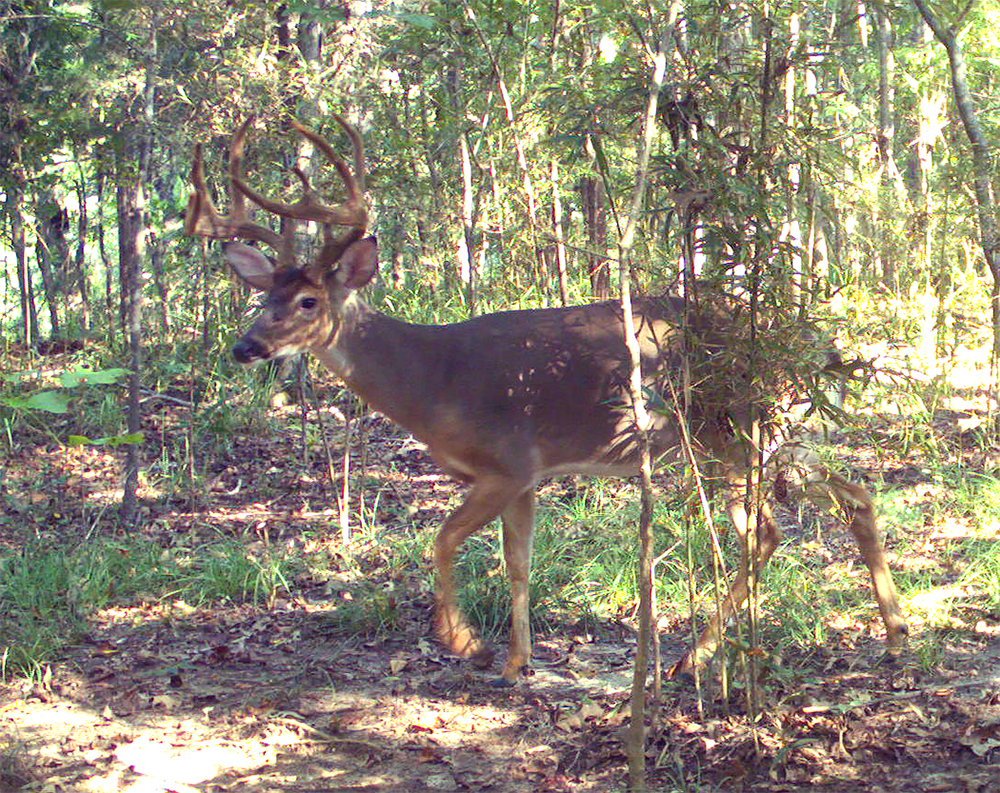By John N. Felsher
More than 300,000 Alabama sportsmen will take to the fields and forests this fall to hunt whitetail deer, the most popular game animal in North America.
“During the last season, hunters killed some really good deer, but the overall harvest was down,” says Chris Cook, the Alabama Division of Wildlife and Freshwater Fisheries deer studies leader in Northport. “Since the harvest was down in 2017-18, a lot more bucks lived to grow another year, so they should be bigger.”
When any sportsman kills a buck or a doe, that person must report it to Game Check within 48 hours. This includes people hunting on private or public lands. The data allows biologists to monitor population trends and the overall health of the deer herd. The easiest way to report a kill is to download a free app to a smart phone. New this year, sportsmen must delete the old app they used last season and download a new one. The old app won’t work this year. For details, see outdooralabama.com/contact-us/mobile-apps.
“Even in places where there is no cell service, people still need to enter their information on the new app and submit it,” Cook says. “The app will automatically upload when it senses a cell signal. In addition, that harvest record is on the phone in case someone checks to see if that person reported the deer.”

Alabama Division of Wildlife and Freshwater Fisheries
Another change this season: Alabama sportsmen traveling out of state to hunt deer must comply with new procedures to prevent the spread of chronic wasting disease. Also called CWD, the disease affects all members of the deer family and attacks an animal’s brain like mad cow disease. So far, CWD has not been confirmed in Alabama, but a deer found in western Mississippi in February 2018 tested positive for the disease.
“Before people can bring a deer or any other animal in the deer family to Alabama, they need to completely debone the meat or have it processed,” Cook says. “They also need to remove all brain, meat and spinal tissue from any deer parts they plan to mount. Once an animal is exposed to CWD, the disease can stay dormant for up to 60 months without the animal showing any signs of it. CWD is a major problem. Fortunately, we haven’t seen CWD in Alabama yet and we want to keep it that way.”
With the purchase of an annual wildlife management area license, people can hunt more than 721,000 acres in 35 state-managed WMAs across the Cotton State. Sportsmen can also hunt several national wildlife refuges, other federal properties and some special opportunity areas. For more on applying to hunt SOAs, see outdooralabama.com/hunting/special-opportunity-areas.
“Each county in Alabama has a healthy huntable deer population,” Cook says. “Some of the best counties are in the northwestern part of the state such as Lamar, Fayette and Marion. Deer populations are on the rise in those counties and in good shape because they have good habitat. Historically, the Black Belt in the central part of Alabama has also been good deer country and produces some quality deer.”
Cook recommends Oakmulgee and Barbour WMAs. In the Talladega National Forest, Oakmulgee spreads across 44,500 acres of Bibb, Hale, Perry and Tuscaloosa counties. The habitat consists mostly of mature pine and upland hardwood forests. People can also hunt the surrounding 392,567-acre national forest.
“Oakmulgee is usually near the top in number of deer killed every year,” Cook says. “It also has some good age structure and antler quality, but not quite as good as Barbour or Black Warrior. Barbour has some of the best habitat in the state with pretty good soils. Skyline is another area that traditionally produces good deer.”
Barbour WMA covers 28,214 acres of Barbour and Bullock counties near Clayton. The property includes a good mix of pine and hardwood forests. James D. Martin-Skyline WMA covers 60,732 acres of the Cumberland Plateau near Scottsboro. The area contains abundant oak trees that provide excellent deer food. The largest WMA in the state, Black Warrior covers 91,263 acres of the Bankhead National Forest near Moulton. People can also hunt the 181,230-acre national forest outside the management area.
“For older bucks with better antler development, I recommend Black Warrior WMA,” Cook says. “The Bankhead National Forest has a low deer density, but a lot of big bucks. It’s very rough country and a tough place to hunt. Black Warrior WMA has the earliest rutting dates in Alabama. The rut there typically peaks around Thanksgiving. During the rut, it’s easier to kill big bucks because they are moving around looking for does.”
Depending upon where one hunts and how, the Alabama deer season could last from Oct. 15 through Feb. 10, 2019. Seasons and regulations may differ on public properties, so always check before hunting anywhere.
For season dates and other information, see outdooralabama.com/hunting/deer-season-zone-map. For information on specific WMAs, see outdooralabama.com/hunting/wildlife-management-areas.
John N. Felsher lives in Semmes, Ala. Contact him through Facebook.




